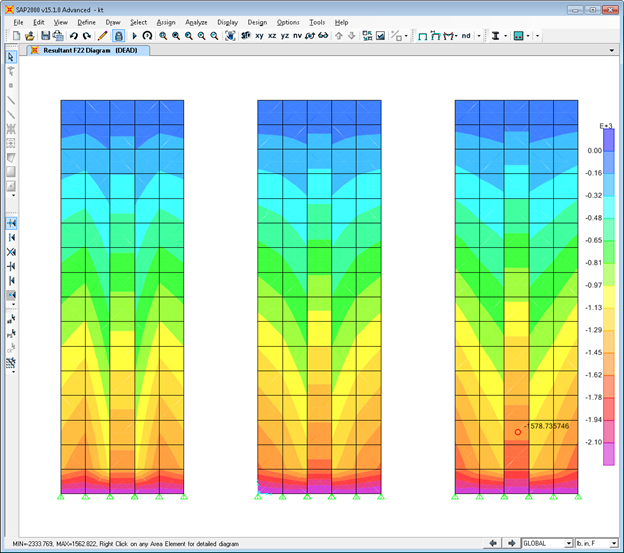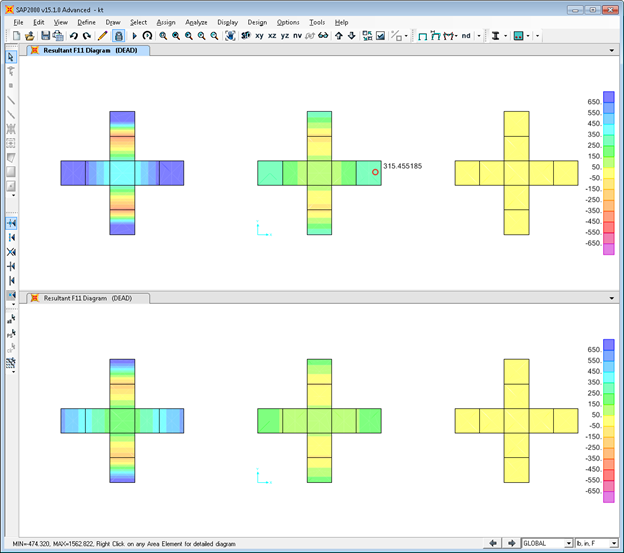A simple model of a tall cruciform building with vertical walls and flat slabs exhibits very different buckling behavior depending on whether or not rigid diaphragms are used for the floors. The study which follows investigates such systems, and the conclusions drawn are described as follows:
...
- Right – Diaphragm constraints (rigid diaphragms)
...
Figure 1 - SAP2000 model with three variations on diaphragm design
Vertical stresses under self-weight
...
Figure 2 - Vertical stresses under self-weight
Horizontal stresses under self-weight
...
Figure 3 - Horizontal stresses under self-weight
Slab stresses at Story 2 (top) and Story 8 (bottom)
...
Figure 4 - Slab stresses at Story 2 (top) and Story 8 (bottom)
Buckling modes 1, 2, 3
...
Figure 5 - Buckling modes 1, 2, 3
Buckling modes 4, 5, 8
...
Figure 6 - Buckling modes 4, 5, 8
Buckling modes 6, 7, 9
...
Figure 7 - Buckling modes 6, 7, 9
Buckling modes 10, 11, 12
...
Figure 8 - Buckling modes 10, 11, 12
Buckling modes 13, 14, 15
...
Figure 9 - Buckling modes 13, 14, 15
Buckling modes 16, 17, 18
...
Figure 10 - Buckling modes 16, 17, 18
Buckling modes 19, 20, 21
...
Figure 11 - Buckling modes 19, 20, 21
Buckling modes 22, 23, 24
...
Figure 12 - Buckling modes 22, 23, 24
Buckling deformation of Stories 2 and 8
...
Figure 13 - Buckling deformation of Stories 2 and 8
Buckling Factors
...
Figure 14 - Buckling Factors
Attachments
...













